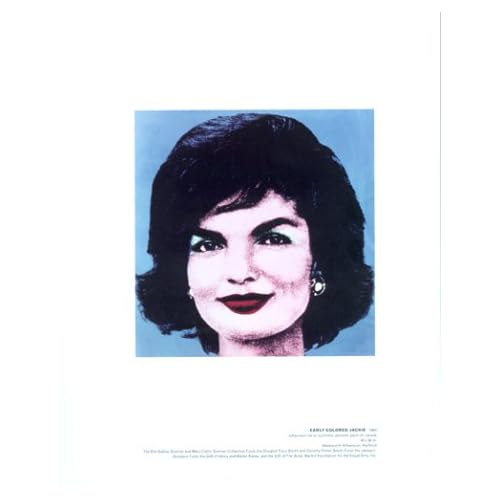About Face: Andy Warhol Portraits
Category: Books,Arts & Photography,History & Criticism
About Face: Andy Warhol Portraits Details
Amazon.com Review In the early 1950s he sketched them. In the '60s he filmed them. And during the '70s and '80s he primarily silk-screened them. But whatever the medium, faces were a dominant theme of Andy Warhol's work throughout his career. And though his portrait work was as often decried by art critics as it was praised by viewers, he never wavered in his interest. About Face: Andy Warhol Portraits is, as the title suggests, a narrowly focused book that explores this favorite subject. Among the book's 75 or so plates, images of Jackie, Marilyn, and Mao join portraits of subjects who need last names to be identified and of Warhol himself. Readers will notice that all of the images--movie stills of Edie Sedgwick and Lou Reed, Polaroids of Warhol in drag, early Interview magazine covers--are unmistakably the work of the same artist. Warhol's choice of wide-ranging portrait subjects, from famous pop-culture figures to anonymous friends and faces drawn from his imagination, allowed him to explore issues of identity, celebrity, and even portraiture itself. With its lovely plates and scholarly essays, this slim but expertly produced book--published to coincide with an exhibition at Hartford's Wadsworth Atheneum in the fall of 1999 and the Miami Art Museum in spring 2000--would make a worthy addition to the library of any Warhol fan. --Jordana Moskowitz Read more From Booklist Throughout a career that continues to be controversial, Andy Warhol made portraits: economically drawn facial outlines and gold-foil inlaid drawings of shoes that ostensibly represent celebrities in the '50s; silk-screened celebrity photos and extended motion-picture head shots in the '60s; and more silk-screened photos, this time altered by abstract applications of color, in the '70s and '80s. About two thirds of this handsome book, keyed to an exhibition that won't travel a lot, displays the range of Warhol's portraiture very handsomely, and three critical essays add considerable value. Nicholas Bauer discusses Warhol's work as a critical deviation from conventional portraiture; Richard Meyer considers the '50s pictures as expressions of homosexual camp; and Douglas Crimp homes in on what is shown and what is not in Warhol's portrait films as well as on the often presumptuous assumptions that previous critics have made about the films. There are probably too many Warhol books, but one more good one is always welcome. This is a good one. Ray Olson Read more See all Editorial Reviews

Reviews
walking through his colourful style in all portraits the reality is swept away and the eccentric personas survive


